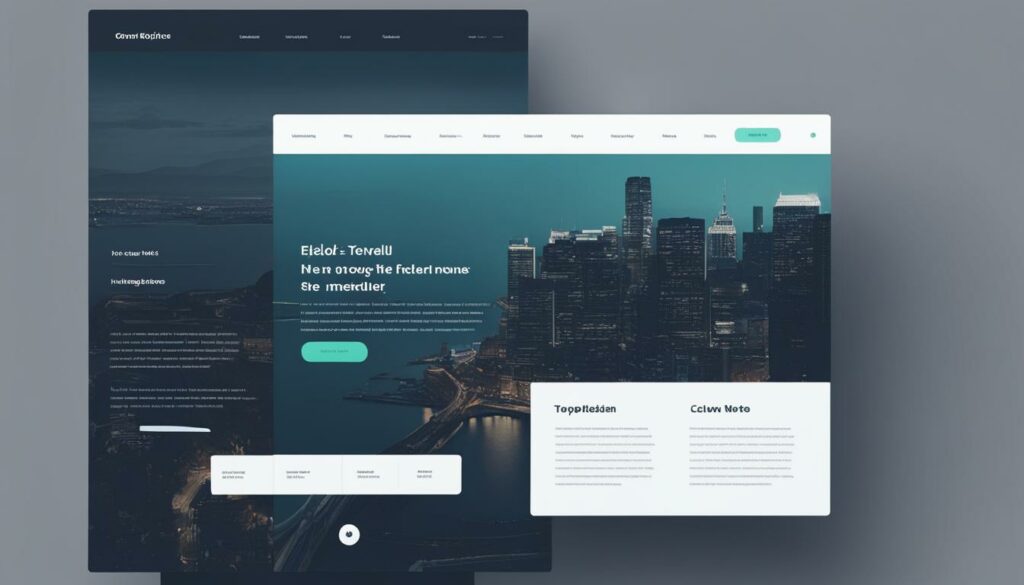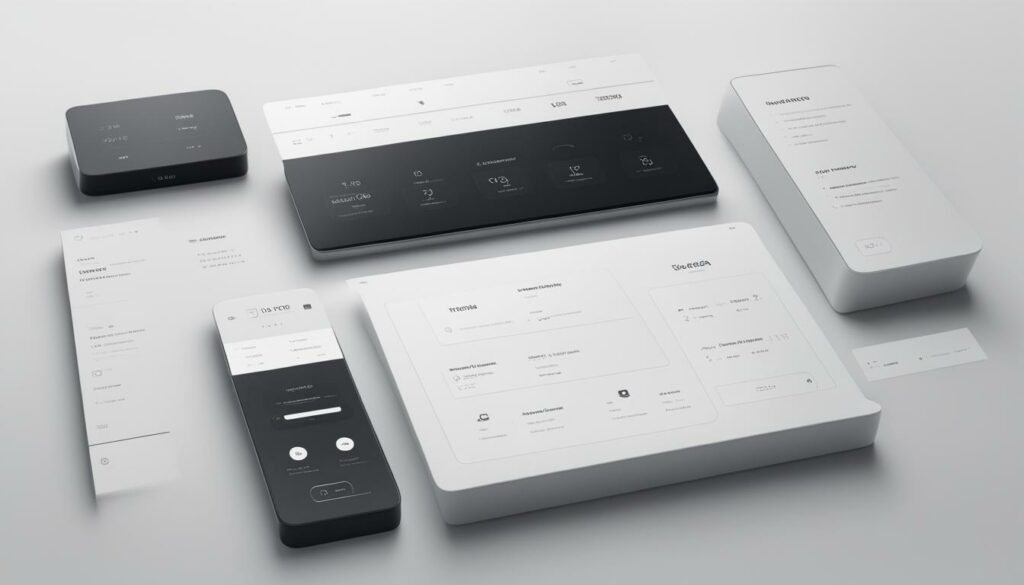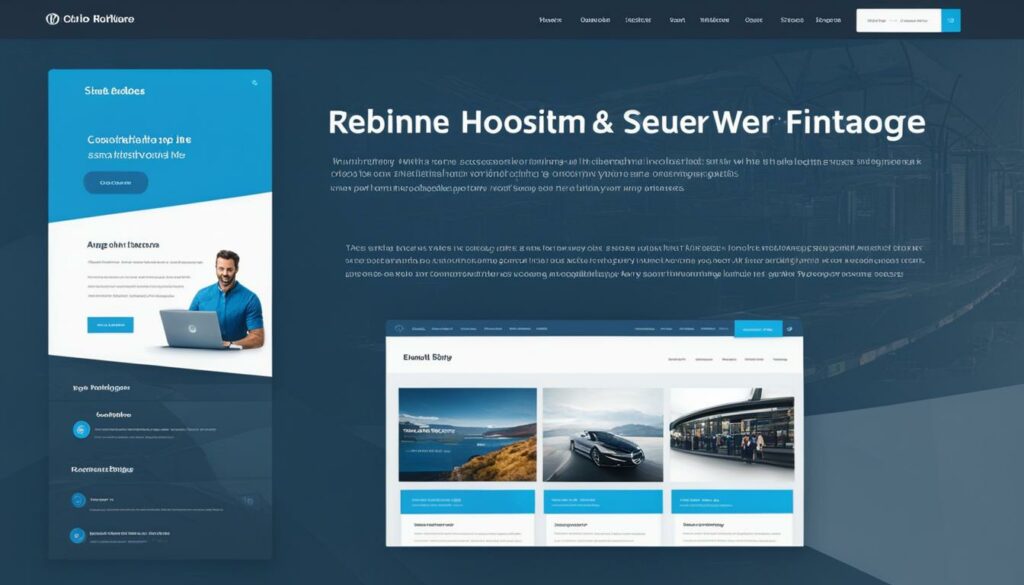In today’s digital landscape, websites play a crucial role in generating leads and converting them into customers. As a business owner, it’s important to prioritize the user experience (UX) on your WordPress website. A seamless user experience can make all the difference in attracting and retaining customers, boosting your website’s conversion rates, and ultimately driving business success.
When it comes to providing the best UX for your WordPress website, hosting plays a significant role. That’s why we recommend WordPress Hosting from BoostedHost. With their optimized hosting solution specifically designed for WordPress, you can rest assured that your website will perform at its best.
Website speed and responsiveness are key factors that contribute to a positive user experience. Slow-loading websites can frustrate visitors and drive them away. BoostedHost’s WordPress Hosting ensures lightning-fast website speed, empowering your users to navigate your website with ease and efficiency.
Responsive design is another crucial aspect of a great user experience. In today’s mobile-dominated world, users access websites from various devices with different screen sizes. BoostedHost’s WordPress Hosting ensures that your website is fully responsive across all devices, providing a seamless and consistent experience for your users.
But it’s not just about speed and responsiveness. BoostedHost’s WordPress Hosting also offers a range of features and optimizations to enhance your website’s UX. From easy-to-use customization options to robust security measures, they provide everything you need to create a user-friendly and secure WordPress website.
Don’t miss out on the opportunity to optimize your website’s user experience with BoostedHost’s WordPress Hosting. Sign up now through this link: www.boostedhost.com/wordpress-hosting and take your website’s performance to the next level.
Key Takeaways:
- Prioritizing UX on your WordPress website is crucial for business success and customer satisfaction.
- BoostedHost’s WordPress Hosting offers optimized performance, fast website speed, and responsive design.
- Responsive design ensures a seamless user experience across all devices.
- BoostedHost’s WordPress Hosting provides customization options and robust security measures.
- Take advantage of BoostedHost’s WordPress Hosting to enhance your website’s user experience and drive business growth.
Understanding User Experience (UX)
User Experience (UX) is a critical aspect of website design that focuses on how people interact with a product, service, or system. In the context of website design, UX encompasses various elements such as website layout, navigation, content presentation, and overall user perception.
The goal of good UX design is to create an experience that addresses the user’s needs, solves their problems, and provides a seamless and enjoyable interaction. It goes beyond visual appeal and aims to provide a user-centric design that caters to the target audience.
Understanding user perception is key to creating effective UX design. User perception refers to how users interpret and experience a website based on their preferences, expectations, and prior experiences. By considering user perception, UX designers can tailor the design elements to the target audience, ensuring that it resonates with their preferences and expectations.
To achieve user-centric design, it’s essential to understand your target audience. Research and analyze their demographics, behaviors, and pain points. This insight will shape the design decisions and enable you to create a website that meets user expectations and provides a positive experience. By aligning your design with user needs, you can create a website that is intuitive, efficient, and tailored to their requirements.
Remember, the user is at the center of UX design. By understanding their needs and designing with a user-centric approach, you can create a website that not only looks visually appealing but also enhances the overall user experience.
The Benefits of Good User Experience
Investing in good UX design for your website can bring several benefits to your business. A well-designed website with a positive user experience can lead to a lower bounce rate, meaning visitors are more likely to stay and explore your site. It can also increase conversion rates, as users are guided towards the solution they are seeking.
Good UX design can also improve customer loyalty and retention, as users are more likely to have a pleasant experience and return to your site. Ultimately, investing in UX can lead to increased revenue for your business.
By prioritizing user experience, you create a website that is intuitive, user-friendly, and visually appealing. This ensures that visitors find what they’re looking for quickly and easily, increasing their satisfaction and encouraging them to engage with your business.

“Investing in good UX design is crucial for businesses in today’s digital era. By creating a user-centric website, you can significantly lower your bounce rate, increase your conversion rates, and ultimately boost your revenue.”
Lower Bounce Rate
A lower bounce rate indicates that visitors are staying on your website for longer periods of time. When your website provides a smooth and enjoyable user experience, visitors are more likely to explore multiple pages, learn more about your products or services, and take desired actions such as making a purchase or filling out a form.
Increased Conversion Rates
Good UX design guides users towards their goals and helps them complete desired actions. By optimizing your website to create a seamless and intuitive user experience, you can increase your conversion rates. Whether it’s completing a purchase, signing up for a newsletter, or filling out a contact form, a positive user experience encourages users to take the desired actions.
Improved Customer Loyalty
A positive user experience creates a lasting impression on your visitors. When users have a pleasant experience on your website, they are more likely to remember your brand and return in the future. By consistently providing a user-friendly and enjoyable experience, you can build trust and improve customer loyalty.
Increased Revenue
Ultimately, investing in good UX design can lead to increased revenue for your business. A well-designed website with a positive user experience attracts more visitors, keeps them engaged for longer, and encourages them to convert. This combination of factors can result in higher sales and overall business growth.
| Benefits | Description |
|---|---|
| Lower Bounce Rate | Visitors stay on your website for longer, exploring multiple pages and taking desired actions. |
| Increased Conversion Rates | Users are guided towards their goals and are more likely to complete desired actions. |
| Improved Customer Loyalty | A positive user experience builds trust and encourages users to return in the future. |
| Increased Revenue | A well-designed website with good UX attracts more visitors and boosts conversions, leading to higher sales. |
By focusing on good user experience, you can create a website that not only meets the needs of your visitors but also drives business success. Prioritizing simplicity, responsiveness, and intuitive design can lead to lower bounce rates, increased conversion rates, improved customer loyalty, and ultimately, increased revenue for your business.
Tips for Improving Your Website’s User Experience
Enhancing the user experience (UX) on your website is crucial for attracting and retaining visitors. By implementing the following UX design tips, you can create a website that is user-friendly, visually appealing, and optimized for a seamless browsing experience.
1. Conduct User Testing
One of the best ways to improve your website’s UX is through user testing. By observing how users interact with your site, you can identify areas for improvement and make informed design decisions. User testing allows you to gather valuable feedback and make data-driven changes that align with your visitors’ needs and preferences.
2. Embrace Simplicity
Avoid overwhelming your users with complex layouts and cluttered design. Embrace simplicity by using clean and minimalistic designs that focus on essential elements. This allows users to navigate your website effortlessly and find the information they need quickly. Clear and concise content, intuitive navigation, and easy-to-understand visuals contribute to a positive UX.
3. Utilize White Space
White space, also known as negative space, is the empty area between elements on a web page. It helps create a sense of balance and allows users to focus on the important content. Use white space strategically to improve readability, highlight key information, and create a visually appealing design. Avoid cluttering your website and provide room for elements to breathe.
4. Ensure Accessibility
Make your website accessible to all users, regardless of their abilities or disabilities. Ensure that your website adheres to accessibility guidelines and standards. Use alt text for images to improve accessibility for visually impaired users and provide closed captions for videos. By prioritizing accessibility, you not only enhance the user experience but also demonstrate inclusivity and reach a wider audience.
“Good design is making something intelligible and memorable. Great design is making something memorable and meaningful.” – Dieter Rams
5. Establish Credibility
Build trust with your users by establishing credibility on your website. Include testimonials, customer reviews, and case studies to showcase the positive experiences of others. Display certifications or security badges to assure visitors that their data and privacy are protected. A website that is perceived as trustworthy creates a more favorable user experience and encourages users to engage and convert.
6. Create an Enjoyable Design
Engage your users by creating a design that is enjoyable and aesthetically pleasing. Incorporate appealing visuals, use harmonious color schemes, and consider adding interactive elements such as animations or microinteractions. A design that evokes positive emotions and provides a delightful browsing experience enhances the overall UX and encourages users to spend more time on your site.

By implementing these UX design tips, you can optimize your website for a seamless and enjoyable user experience. Conduct user testing, embrace simplicity, utilize white space, ensure accessibility, establish credibility, and create an enjoyable design to enhance the overall UX of your website. Remember, a positive user experience leads to increased engagement, higher conversion rates, and ultimately, the success of your online presence.
Understanding User Interface (UI) and UI Design
User Interface (UI) is an important aspect of any digital product or service. It encompasses the visual and interactive elements that users interact with when using a website or application. UI design focuses on creating a visually appealing and engaging design that enhances user satisfaction. While UI design is closely related to UX design, they serve different purposes. UX design takes a holistic approach to the overall user experience, while UI design is specifically concerned with the look and feel of the product or service.
When it comes to UI design, visual design and functional design are key components. Visual design focuses on the aesthetics of the user interface, including colors, typography, layout, and images. It aims to create a visually pleasing experience that aligns with the brand’s identity and resonates with the target audience. Functional design, on the other hand, focuses on the usability and efficiency of the user interface. It involves designing intuitive navigation, clear calls to action, and interactive elements that enhance the user’s ability to achieve their goals.
Effective UI design plays a crucial role in shaping the user’s perception of a product or service. It can make the difference between a delightful user experience and a frustrating one. A well-designed UI can create a positive emotional connection with users, increase their engagement, and contribute to the overall success of a website or application. To illustrate the impact of UI design, let’s take a look at the following example:
“The user interface of a website sets the first impression for visitors. An attractively designed and user-friendly interface can capture their attention and keep them engaged. On the other hand, a poorly designed and cluttered interface can drive users away and negatively impact their perception of the brand.”
UI Design at BoostedHost
At BoostedHost, we understand the importance of UI design in delivering exceptional user experiences. Our WordPress Hosting service offers a seamless and visually appealing interface that prioritizes user satisfaction. With our user-friendly dashboard, you can easily manage your website and take advantage of various features to enhance your online presence.
Here’s an example of our UI design for the BoostedHost WordPress Hosting service:
| Feature | Description |
|---|---|
| Intuitive Dashboard | An easy-to-navigate dashboard that provides access to all essential tools and features for managing your WordPress website. |
| Responsive Design | A user interface that adapts seamlessly to different screen sizes, ensuring a consistent and optimized experience across devices. |
| Customization Options | A range of customization options for tailoring the appearance and functionality of your website to meet your specific needs. |
| Fast Loading Times | An optimized user interface that prioritizes website speed, minimizing loading times and ensuring a smooth user experience. |
Our UI design at BoostedHost focuses on creating a visually pleasing and intuitive interface that enhances your WordPress hosting experience. We believe that by prioritizing user interface design, we can provide our customers with exceptional usability, efficiency, and satisfaction.
Sign up for BoostedHost WordPress Hosting now and experience the power of a well-designed user interface to elevate your online presence.

Creating User Personas for Targeted Design
User personas are essential tools for understanding your target audience and designing products and services that cater to their specific needs. By creating user personas, you can gain insights into your ideal customer profile, including their motivations, needs, and limitations. This information allows you to align your design thinking process with the characteristics of your user personas, resulting in a targeted and effective design that resonates with your ideal customers.
Creating user personas involves conducting thorough research and analysis to identify common traits and characteristics among your target audience. This can include demographic information such as age, gender, occupation, and location, as well as psychographic factors like interests, aspirations, and pain points.
Once you have gathered the necessary data, you can use it to create fictional representations of your target audience. Each user persona should embody a specific set of traits that align with different segments of your target market. For example, if you run an e-commerce website selling sustainable fashion, you might have user personas representing environmentally-conscious millennials and eco-conscious professionals.
“User personas help you empathize with your target audience and view your design through their eyes.”
A well-defined user persona provides valuable insights throughout the design process. It helps you make informed decisions about the layout, content, and functionality of your website, ensuring it addresses the specific needs and preferences of your target audience. By considering the goals, motivations, and limitations of your user personas, you can create a seamless and enjoyable user experience that helps your ideal customers achieve their objectives.
Example User Persona: Alex
| Demographic Information | Age: 28 Occupation: Marketing Manager Location: Chicago, IL |
|---|---|
| Psychographic Information | Interests: Sustainable living, ethical fashion Aspirations: Supporting environmentally-friendly brands Pain Points: Limited selection of sustainable clothing options |
| Goals | Find stylish and affordable sustainable fashion options Support brands with a strong commitment to sustainability |
| Limits | Busy work schedule Concerns about the availability and accessibility of sustainable fashion brands |
In this example, Alex represents a target customer who is interested in sustainable fashion. By understanding Alex’s goals, aspirations, and pain points, you can design a website that offers a wide range of affordable sustainable fashion options, provides clear information about the sustainability practices of the brands featured, and addresses concerns about availability and accessibility.
By creating user personas and integrating them into your design thinking process, you can ensure that your website is tailored to the needs and preferences of your ideal customers. This targeted approach leads to a more effective design that resonates with your target audience, resulting in increased engagement, customer satisfaction, and business success.
Understanding Website User Flows for Improved UX
Analyzing user behavior and understanding how users navigate your website is crucial for improving the user experience. By evaluating website user flows, you can identify potential stumbling blocks and optimize the design to guide users towards their desired actions.
To achieve effective user experience optimization, it is essential to understand your desired website user flows. This involves mapping out the paths users are likely to take on your site and ensuring that your website’s navigation and structure facilitate a seamless and intuitive user experience.
Website user flows refer to the paths that users follow as they interact with your website. By analyzing user behavior and identifying common patterns, you can optimize your website to guide users through their journey and steer them towards desired actions.
Why Website User Flows Matter
Understanding website user flows is crucial because it allows you to:
- Identify pain points and friction in the user experience
- Optimize the design to remove obstacles and improve usability
- Guide users towards specific actions and conversions
- Enhance overall user satisfaction and engagement
Tips for Analyzing Website User Flows
Here are some practical tips for analyzing and optimizing your website user flows:
- Use analytics tools to track user behavior and identify common paths and drop-off points.
- Conduct user testing to gather insights into how users interact with your website and uncover any usability issues.
- Employ heatmaps to visualize user behavior patterns, such as scroll depth and click activity.
- Implement A/B testing to compare different variations of your website and determine which flow drives better results.
Optimizing User Flow with BoostedHost
At BoostedHost, we understand the importance of user experience optimization for your WordPress website. Our WordPress Hosting plans are designed to provide exceptional speed, reliability, and performance, ensuring a seamless user flow for your visitors.
Sign up now for BoostedHost’s WordPress Hosting and take advantage of our user-friendly interface, expert support, and cutting-edge infrastructure. Visit our website at www.boostedhost.com/wordpress-hosting for more information.
| Benefits of Analyzing Website User Flows | How it Impacts User Experience |
|---|---|
| Identify user drop-off points | Optimize the design to reduce bounce rates |
| Understand user preferences and behavior | Create personalized and targeted user experiences |
| Optimize conversion funnels | Increase conversion rates and revenue |
| Improve navigation and site structure | Enhance user satisfaction and engagement |
Prioritizing Accessibility for Better UX
Website accessibility is a critical aspect of providing a positive user experience for all visitors to your site, including those with disabilities. By prioritizing accessibility in your web design, you not only create a more inclusive digital space but also improve your website’s search engine optimization (SEO) performance. Incorporating accessibility features such as alt tags for images and closed captioning for videos not only benefit users with disabilities but also enhance the overall user experience for all your visitors.
When you ensure that your website meets accessibility standards, you make it easier for individuals with disabilities to navigate and interact with your content. This can have a profound impact on their ability to access information, products, and services. Additionally, accessible web design promotes equal participation and inclusivity, allowing everyone to fully engage with your website.
One of the SEO benefits of accessibility is that search engines like Google prioritize websites that are accessible to all users. By making your website accessible, you improve its visibility and ranking in search engine results, which can drive more organic traffic to your site. Additionally, accessible web content improves user engagement, reducing bounce rates and increasing the time users spend on your site, all of which are positive signals for SEO.
Optimizing your website for accessibility also involves providing alternative text descriptions for images using alt tags. Alt tags not only assist users with visual impairments in understanding the content of an image but also provide valuable information to search engines. Including relevant keywords in your alt tags can enhance your website’s discoverability and further boost your SEO efforts.
Inclusive Design for a Better User Experience
When it comes to creating an inclusive user experience, inclusive design plays a crucial role. Inclusive design involves designing and developing digital products and services that can be used by people with a wide range of abilities and disabilities. By incorporating inclusive design principles into your web development process, you ensure that your website is accessible and usable for everyone.
Inclusive design goes beyond meeting basic accessibility requirements. It involves considering diverse user needs and providing flexible solutions that accommodate different abilities, preferences, and situations. By adopting inclusive design practices, you create a welcoming and supportive online environment that empowers all users to engage with your content and achieve their goals.
| Benefits of Prioritizing Accessibility | Benefits |
|---|---|
| Improved user experience for all visitors, regardless of disabilities | Enhanced website accessibility |
| Higher search engine ranking and visibility | SEO benefits of accessibility |
| Reduced bounce rates and increased user engagement | Inclusive design and user retention |
By prioritizing accessibility and embracing inclusive design principles, you create a digital environment that fosters inclusivity, improves user satisfaction, and boosts your website’s SEO performance. Making your website accessible to all visitors, regardless of their abilities, not only benefits users but also contributes to a more equitable and inclusive online ecosystem.
Quotable:
“Inclusive design is designing for the full range of human diversity.” – Microsoft
Optimizing Website Headers, Footers, and Forms for UX
Website headers, footers, and forms all contribute to the overall user experience (UX) of your website. These elements play a significant role in providing essential navigation options and quick access to important information. Optimizing these sections with clear and user-friendly designs, including strategic microcopy and user-friendly forms, can greatly enhance the UX of your website.
When it comes to website headers, they serve as a guide for users, helping them navigate through various pages and sections of your site. A well-designed header should be intuitive, allowing users to easily find what they’re looking for. It should include clear and concise navigation menus, search functionality, and links to important pages.
“A well-optimized website header provides users with intuitive navigation and access to important information.”
Similarly, website footers should complement the header by providing additional navigation options and important links. They often include contact information, social media icons, copyright notices, and links to privacy policies and terms of service. A well-optimized footer ensures that users can easily find the information they need, regardless of where they are on your website.
When it comes to forms, they are critical for collecting leads and facilitating user interactions. To optimize the UX of your forms, consider the following:
- Simplify the form by keeping only essential fields and removing any unnecessary steps or questions. This reduces friction and improves the overall user experience.
- Ensure that the form is visually appealing, with clear instructions and labels for each field. Use microcopy to provide guidance and help users understand what information is required.
- Make sure the form is user-friendly and responsive, allowing users to easily navigate between fields, submit their information, and receive confirmation.
By optimizing website headers, footers, and forms, you can create a seamless and intuitive user experience that encourages user engagement and conversions.
| Optimization Tips for Website Headers, Footers, and Forms | Description |
|---|---|
| 1. Make navigation menus easily accessible | Ensure that navigation menus are prominently displayed in the header and easily accessible on all pages. Use clear and concise labels. |
| 2. Provide essential information in the footer | Include contact information, social media icons, privacy policies, terms of service, and other relevant links in the footer for easy access. |
| 3. Simplify form design | Remove unnecessary fields and steps from forms, simplifying the process for users and reducing friction. |
| 4. Use clear instructions and microcopy | Provide clear instructions and use microcopy to guide users through the form, ensuring they understand what information is required. |
| 5. Make forms responsive | Ensure that forms are responsive and easy to use on different devices, allowing users to input information and submit forms seamlessly. |
Conclusion
Prioritizing user experience (UX) in WordPress hosting is crucial for creating a successful website. By understanding and implementing UX design principles, focusing on simplicity, accessibility, and credibility, you can optimize your website for an enjoyable user experience. Incorporating user testing and feedback, as well as understanding your target audience through user personas, will further enhance your website’s UX.
Remember, good UX not only benefits your users but also leads to lower bounce rates, increased conversions, improved customer loyalty, and ultimately, increased revenue for your business. It is important to invest in a reliable and high-performing hosting provider like BoostedHost for optimal WordPress hosting. Their services ensure fast loading speeds, responsive design, and seamless website performance.
Don’t underestimate the power of UX in shaping the success of your online presence. By prioritizing a user-centric design and continuously optimizing your website’s UX, you can create a positive and engaging experience for your visitors, encouraging them to stay longer, engage with your content, and take desired actions. So, start implementing these UX strategies today and watch your website thrive!
FAQ
Q: What is user experience (UX) in website design?
A: User experience (UX) refers to how people interact with a product, service, or system, particularly in the context of website design. It focuses on creating an experience that helps the user solve their problem and meet their needs.
Q: Why is user experience (UX) important for my WordPress website?
A: Good UX design can lead to a lower bounce rate, increased conversion rates, improved customer loyalty, and ultimately, increased revenue for your business. Prioritizing UX on your WordPress website helps create a successful website.
Q: What is the difference between user interface (UI) and user experience (UX) design?
A: User interface (UI) design focuses on the visual and interactive elements of a digital product or service, creating a visually pleasing and engaging design. UX design is concerned with the overall user experience, ensuring the design meets the user’s needs and solves their problems.
Q: How do user personas help in website design?
A: User personas are fictional representations of your target audience. They help you understand your ideal customer profile and their motivations, needs, and limitations. By aligning the design thinking process with user personas, you can create a targeted and effective design.
Q: How can I improve the user experience on my website?
A: To improve the user experience on your website, consider implementing tips such as user testing, simplifying the design with white space, ensuring accessibility, establishing credibility, and creating an enjoyable design.
Q: Why is website accessibility important for user experience?
A: Website accessibility is essential for providing a positive user experience for all users, including those with disabilities. It improves inclusivity and search engine optimization (SEO) while benefiting all users by providing accessible features like alt tags for images and closed captioning for videos.
Q: What role do website headers, footers, and forms play in user experience?
A: Website headers and footers provide essential navigation options and quick access to important information. Optimizing these sections with clear and user-friendly design, including microcopy, and easy-to-use forms enhances the overall user experience.












